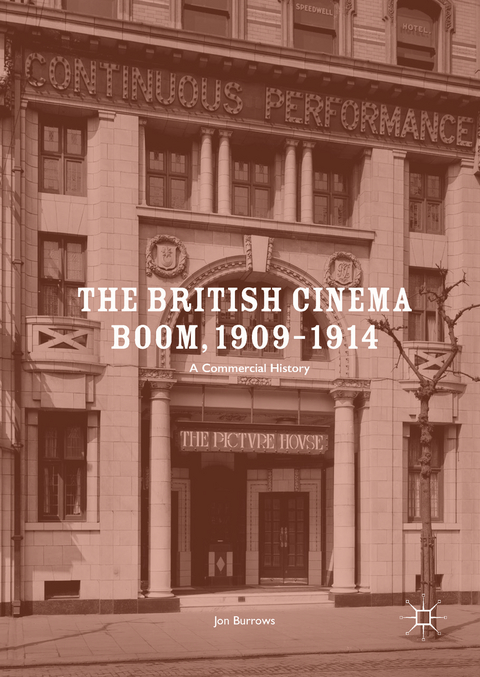
The British Cinema Boom, 1909–1914
A Commercial History
Seiten
2017
|
1st ed. 2017
Palgrave Macmillan (Verlag)
978-1-137-39676-1 (ISBN)
Palgrave Macmillan (Verlag)
978-1-137-39676-1 (ISBN)
This book examines why thousands of cinemas opened in Britain in the space of a few years before the start of the First World War. This account also takes a new look at the development of film distribution, the emergence of the feature film and the creation of the British Board of Film Censors.
This book examines why thousands of cinemas opened in Britain in the space of a few years before the start of the First World War. It explains how they were the product of an investment boom which observers characterised as economically irrational and irresponsible. Burrows profiles the main groups of people who started cinema companies during this period, and those who bought shares in them, and considers whether the early cinema business might be seen as a bubble that burst. The book examines the impact of the Cinematograph Act 1909 upon the boom, and explains why British film production seemed to decline in inverse proportion to the mass expansion of the market for moving image entertainment. This account also takes a new look at the development of film distribution, the emergence of the feature film and the creation of the British Board of Film Censors. Making systematic and pioneering use of surviving business and local government records, this book will appeal to anyone interested in silent cinema, the history of film exhibition and the economics of popular culture.
This book examines why thousands of cinemas opened in Britain in the space of a few years before the start of the First World War. It explains how they were the product of an investment boom which observers characterised as economically irrational and irresponsible. Burrows profiles the main groups of people who started cinema companies during this period, and those who bought shares in them, and considers whether the early cinema business might be seen as a bubble that burst. The book examines the impact of the Cinematograph Act 1909 upon the boom, and explains why British film production seemed to decline in inverse proportion to the mass expansion of the market for moving image entertainment. This account also takes a new look at the development of film distribution, the emergence of the feature film and the creation of the British Board of Film Censors. Making systematic and pioneering use of surviving business and local government records, this book will appeal to anyone interested in silent cinema, the history of film exhibition and the economics of popular culture.
Jon Burrows is an Associate Professor in the Department of Film and Television Studies at the University of Warwick, UK. He is the author of Legitimate Cinema: Theatre Stars in Silent British Films, 1908-1918 (2003) and numerous essays and articles about British film culture in the silent era.
1. Introduction.- 2. Capital.- 3. Constraints.- 4. Turnover.- 5. Suppliers.- 6. Conclusion.
| Erscheinungsdatum | 19.01.2018 |
|---|---|
| Zusatzinfo | 5 Illustrations, black and white; XI, 242 p. 5 illus. |
| Verlagsort | Basingstoke |
| Sprache | englisch |
| Maße | 148 x 210 mm |
| Themenwelt | Kunst / Musik / Theater ► Film / TV |
| Geisteswissenschaften ► Geschichte ► Regional- / Ländergeschichte | |
| Sozialwissenschaften ► Kommunikation / Medien ► Journalistik | |
| Sozialwissenschaften ► Kommunikation / Medien ► Medienwissenschaft | |
| Wirtschaft | |
| Schlagworte | 1910s architecture • 1910s cinema • Cinema • Early Cinema • Edwardian films • Film distribution • Film exhibitions • film in 1910s • Film production • History • History of Literature • Silent cinema |
| ISBN-10 | 1-137-39676-8 / 1137396768 |
| ISBN-13 | 978-1-137-39676-1 / 9781137396761 |
| Zustand | Neuware |
| Haben Sie eine Frage zum Produkt? |
Mehr entdecken
aus dem Bereich
aus dem Bereich


